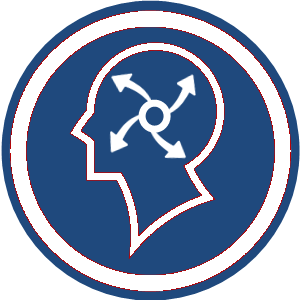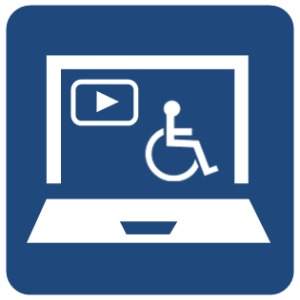ADHD in the Classroom: Transforming Accessibility with Smart Design and Technology
Faith Zwarych
Introduction
Attention Deficit Hyperactivity Disorder, or ADHD, is a common neurodevelopmental disorder. Addressing accessibility issues for students with ADHD is crucial, as their condition can lead to many difficulties, including maintaining focus, staying organized, and managing impulsivity. These difficulties can drastically impact these students’ academic performance and classroom behavior. Inclusive education is essential to ensure that all students, regardless of their neurodevelopmental differences, have equal academic and social opportunities. This paper aims to identify the specific challenges faced by students with ADHD in the K-12 educational setting, as well as some proposed effective solutions and tools.
Attention Deficit Hyperactivity Disorder
 Attention Deficit Hyperactivity Disorder, or ADHD, is characterized by symptoms such as inattention, hyperactivity, and impulsivity, which can significantly affect a student’s ability to function effectively in school (American Psychiatric Association, 2013). Statistics show that in North America, particularly in Canada, there is a rise of K-12 students being diagnosed with ADHD at 5-9% (Polanczyk et al., 2014). This increase is largely due to improved diagnostic practices, greater awareness, and broader criteria for identifying ADHD.
Attention Deficit Hyperactivity Disorder, or ADHD, is characterized by symptoms such as inattention, hyperactivity, and impulsivity, which can significantly affect a student’s ability to function effectively in school (American Psychiatric Association, 2013). Statistics show that in North America, particularly in Canada, there is a rise of K-12 students being diagnosed with ADHD at 5-9% (Polanczyk et al., 2014). This increase is largely due to improved diagnostic practices, greater awareness, and broader criteria for identifying ADHD.
Accessibility
Accessibility in the K-12 educational setting refers to creating equitable opportunities and resources that enable all students, including those with diverse learning and physical needs, to participate and succeed in school. This would include physical, instructional, and technological accommodation tailored to individual student’s needs. Doing these things helps to ensure that all students can access and engage with the curriculum and activities in the classroom (National Center on Universal Design for Learning, 2020).
Accessibility Challenges Faced by K-12 Students with ADHD
![]() Students with ADHD in K-12 educational settings face significant accessibility challenges. The following are some of the main accessibility challenges that some of these students may face:
Students with ADHD in K-12 educational settings face significant accessibility challenges. The following are some of the main accessibility challenges that some of these students may face:
Difficulty with Focus and Sustained Attention
Having difficulty with focus and sustained attention means that they are easily distracted by things in the classroom, such as noise or movement (Barkley, 2015), which hinders their ability to stay engaged with the curriculum and impacts their academic performance. This might mean that the students need extended time to complete tasks or tests, as they might find it challenging to stay focused for longer periods.
Impulse Control Issues
For students with ADHD and in K-12 classrooms, difficulties with impulse control will present themselves as disruptive behaviors. This may look like interrupting teachers or classmates, blurting out answers, or engaging in physical movements that disrupt the learning environment (Barkley, 2015). Doing these things will not only affect their learning but disrupt the learning of their peers and their teacher’s instruction.
Hyperactivity
Hyperactivity among K-12 students with ADHD can lead to challenges in classroom behaviors and engagement. They struggle to remain seated for extended periods of time and often require movement breaks to release their energy (American Psychiatric Association, 2013). If they do not get this, it could result in physical outbursts or fidgeting, impacting the overall learning environment.
Time Management Issues
Time management is a significant challenge for K-12 students with ADHD. These challenges may be shown by difficulty pacing themselves during tests or tasks, rushed work, or incomplete tasks (Langberg et al., 2011). It is also common for students to procrastinate when starting assignments, adding to their academic stress and overall performance.
Working Memory Deficits
Working memory deficits impact one’s ability to follow instructions and remember information, especially in K-12 students with ADHD. Not being able to follow instructions correctly and remember previously learned concepts will drastically hinder one’s academic progress and ability to organize one’s thoughts during tasks (Barkley, 2015).
Emotional and Social Challenges
Emotional and social challenges in K-12 students with ADHD will look like heightened emotional responses, including frustration and anxiety, particularly when they are working on academic tasks. These challenges can impact their motivation and engagement in learning activities (Langberg et al., 2011). Socially, they may struggle with peer interactions due to impulsivity or difficulties in understanding social cues, affecting their relationships and sense of belonging within the school community.
Policies
 There have been recent improvements in research surrounding ADHD and its impact on education. With that in mind, Canadian provinces have implemented policies to support children with ADHD in schools, emphasizing early intervention and support systems.
There have been recent improvements in research surrounding ADHD and its impact on education. With that in mind, Canadian provinces have implemented policies to support children with ADHD in schools, emphasizing early intervention and support systems.
Individual Education Plans
Across Canada, Individual Education Plans (IEPs) are developed for students with exceptionalities, including ADHD. These plans outline specific accommodations and support their individual learning needs. These plans are mandated under provincial educational policies to ensure students receive appropriate academic and behavioral support (Government of Ontario, 2020).
Provincial Education Acts
Each Canadian province has its own Education Act that outlines rights and accommodations for students with disabilities, including ADHD. These acts mandate inclusive education practices and ensure that schools provide necessary accommodations to support students’ learning and participation in the classroom (Education Act of British Columbia, 2020).
Accessibility Standards
In some provinces, accessibility standards are legislated to ensure that educational instructions provide accessible environments and resources for students with disabilities, including ADHD. These standards may cover physical accessibility, assistive technologies, and inclusive teaching practices to support diverse learning needs (Government of Ontario, 2020).
Support Services
Educational policies also support providing support services such as psychological assessments, counseling, and specialized teaching strategies for students with ADHD. These services aim to address any accessibility challenges students with ADHD may face in the K-12 educational setting (Government of Canada, 2020).
These policies and frameworks demonstrate Canada’s commitment to promoting accessibility and inclusive education practices for students with ADHD, ensuring they have equal opportunities to thrive academically and socially.
Proposed Solutions: Instructional Design Strategies
 Implementing effective instructional design strategies, including Universal Design for Learning (UDL), is crucial to addressing the accessibility challenges faced by K-12 students with ADHD. These strategies focus on creating flexible learning environments that accommodate diverse needs, emphasizing multiple means of representation, action, expression, and engagement. Some of these strategies include:
Implementing effective instructional design strategies, including Universal Design for Learning (UDL), is crucial to addressing the accessibility challenges faced by K-12 students with ADHD. These strategies focus on creating flexible learning environments that accommodate diverse needs, emphasizing multiple means of representation, action, expression, and engagement. Some of these strategies include:
Individualized Education Plans (IEPs)
Individualized Education Plans (IEPs) are essential for providing personalized accommodations to students with ADHD based on their unique needs. Effective accommodations might include extended test time, a quiet space for taking tests, organizational tools, and preferential seating to minimize distractions.
Structured and Clear Instructions
Students with ADHD benefit from straightforward, concise directions that are broken down into manageable steps. Techniques for effective communication include using visual aids, providing written and oral instructions, and conforming understanding through repetition or paraphrasing. Checklists and timelines are also useful to help students stay on track with their assignments accurately and on time.
Positive Reinforcement and Behavioural Interventions
Positive reinforcement and behavioral interventions are effective strategies for managing impulses and hyperactivity, which are often seen in students with ADHD. Some examples of positive reinforcement could include rewarding desirable behaviors, such as verbal praise, stickers, or extra playing time. Behavioral interventions might include setting specific, achievable goals and providing immediate dieback on performance.
Frequent Breaks and Movement Opportunities
Incorporating frequent breaks and movement opportunities throughout the school day is very beneficial for students with ADHD. Regular breaks help them manage their energy levels and maintain concentration in the classroom. Ensuring that there are classroom activities that allow movement, such as stretching or standing desks, can improve their ability to focus and learn effectively.
Proposed Solutions: Digital Teaching and Learning Resources Assistive Technologies
 Assistive technologies, such as timers, organizational apps, and text-to-speech software, support students with AHHD. Timers help students manage their time effectively by breaking tasks into smaller, more manageable pieces. Organizational apples, like Trello, provide tools for tracking assignments and deadlines, helping students stay organized and on task. Text-to-speech software, such as Kurzweil 3000, assists students in reading and comprehending text, making learning more accessible.
Assistive technologies, such as timers, organizational apps, and text-to-speech software, support students with AHHD. Timers help students manage their time effectively by breaking tasks into smaller, more manageable pieces. Organizational apples, like Trello, provide tools for tracking assignments and deadlines, helping students stay organized and on task. Text-to-speech software, such as Kurzweil 3000, assists students in reading and comprehending text, making learning more accessible.
Trello
Trello is an organizational app that provides a visual and intuitive platform for managing tasks and projects (Trello, n.d.), making it particularly beneficial for students with ADHD. This tool uses boards, lists, and cards to help users organize their assignments, set deadlines, and track their progress. For students with ADHD, Trello’s visual layout makes it easier to break down large tasks into smaller, more manageable steps. The app allows for color-coding, labeling, and additions to due dates and checklists (Trello, n.d.), which can help students prioritize their work and stay on track. Trello can help students with ADHD reduce overwhelming feelings and improve their time management skills, leading to better academic outcomes and reduced anxiety.
Interactive Learning Platforms
Interactive learning platforms, like Kahoot and Quizlet, can significantly benefit students with ADHD by increasing their engagement and retention. These platforms offer game-based learning to make education fun and interactive, which helps maintain students’ interest and motivation. They can also create flashcards, enabling students to study more dynamically and interactively. Instant feedback is also available on both platforms, which is essential for reinforcing learning and keeping students engaged.
Quizlet
Quizlet is an online learning platform that supports students with ADHD by facilitating interactive study through customizable digital flashcards (Quizlet, n.d.). It promotes active learning strategies like repetition and active recall, which benefit students with attention deficits. Quizlet’s instant feedback features (Quizlet, n.d.) also enhance engagement and help students with ADHD manage their study sessions effectively, fostering improved academic performance.
Online Course Platforms
Online course platforms, such as Moodle and similar services, offer many opportunities for accessible learning, particularly for students with ADHD. These platforms provide remote access to a wide range of courses, allowing students to learn at their own pace and according to their own schedules. These platforms cater to diverse learning needs, offering various formats like videos, interactive modules, and discussion forms. This flexibility helps students with ADHD by accommodating their unique learning styles and providing a more personalized educational experience.
Moodle
Moodle is a widely used online course management system that provides schools and educational institutions with a way to deliver courses in an engaging virtual learning environment. It supports students with ADHD by offering flexible access to learning material, assignments, and communication tools, which can be personalized to accommodate diverse learning needs (Moodle, n.d.). The platform’s structure allows educators to organize content integrate multimedia resources, and provide interactive activities, enhancing student engagement and self-placed learning (Moodle, n.d.).
Potential Moderators of Effectiveness
In research, a moderator is a variable that influences the relationship between an independent variable (such as instructional strategies) and a dependent variable (such as academic performance or behavior) (DuPaul & Stoner, 2014). Moderators can either enhance or diminish the effectiveness of interventions by introducing variability or conditions that impact outcomes. For example, inconsistent implementation of strategies across classrooms or limited resources can hinder the effectiveness of instructional strategies designed to support students with ADHD (DuPaul & Stoner, 2014). Understanding and addressing these moderators is crucial for optimizing the impact of interventions in educational settings.
Lack of Consistent Implementation
Inconsistencies in implementing Individualized Education Plans (IEPs) and Universal Design for Learning (UDL) principles across classrooms can undermine their effectiveness for students with ADHD (DuPaul & Stoner, 2014). Variability in educator understanding and application may lead to uneven support and outcomes, affecting academic performance and engagement levels.
Limited Resources and Support
The availability of resources and support plays a crucial role in the success of strategies for students with ADHD (DuPaul & Stoner, 2014). Schools with inadequate funding or access to assistive technologies and specialized training for teachers may struggle to provide essential accommodations, hindering the implementation of effective instructional strategies.
Resistance to Change
Resistance from educators or administrators to adopt new instructional strategies and technologies can hinder efforts to support students with ADHD effectively (DuPaul & Stoner, 2014). Overcoming resistance and fostering a supportive environment for change is essential to implementing positive reinforcement techniques, structured instructions, and other beneficial strategies.
Complexity of Behavioural Interventions
Behavioral interventions require consistent monitoring and adjustment to meet the dynamic needs of students with ADHD (DuPaul & Stoner, 2014). Educator training and ongoing professional development are critical to understanding and effectively implementing these interventions to manage impulsivity and improve behavioral outcomes.
Environmental Factors
Environmental factors such as classroom size, noise levels, and overall learning environment can impact the feasibility and success of instructional strategies for students with ADHD (DuPaul & Stoner, 2014). Addressing these factors through supportive classroom arrangements and modifications can enhance the effectiveness of structured instructions, breaks, and other supportive strategies.
By addressing these potential moderators through comprehensive training, adequate resource allocation, and ongoing support, educators can enhance the effectiveness of instructional strategies and better support the academic and behavioral needs of students with ADHD.
Conclusion
In conclusion, addressing the accessibility challenges faced by K-12 students with ADHD requires a multifaceted approach that integrates effective instructional design strategies, digital resources, and supportive policies. By implementing these strategies and tools, educators can create inclusive learning environments that cater to diverse learning needs. However, the effectiveness of these strategies can be influenced by factors such as inconsistent implementation across classrooms, limited resources, and resistance to change. To optimize outcomes, it is essential for educators to receive comprehensive training and for educational policies to support the provision of necessary accommodations and services. By fostering an inclusive educational environment that addresses these challenges systematically, Canada can ensure that students with ADHD have equitable opportunities to succeed academically and reach their full potential.
References
American Psychiatric Association. (2013). Diagnostic and statistical manual of mental disorders (5th ed.). American Psychiatric Publishing.
Anderson, D. L., & Sweeney, S. (2018). Assistive technology for students with ADHD. Journal of Special Education Technology.
Barkley, R. A. (2015). Attention-deficit hyperactivity disorder: A handbook for diagnosis and treatment (4th ed.). Guilford Press.
DuPaul, G. J., & Stoner, G. (2014). ADHD in the schools: Assessment and intervention strategies. Guilford Publications.
Education Act of British Columbia, R.S.B.C. 2020, c. 1 (Can.)
Government of Canada. (2020). Children and Youth with Special Needs. https://www.canada.ca/en/public-health/services/health-promotion/childhood-adolescence/children-youth-special-needs.html
Government of Ontario. (2020). Education in Ontario. https://www.ontario.ca/page/education-ontario
Langberg, J. M., Becker, S. P., & Vaughn, A. J. (2011). Factors related to academic success among students with ADHD in a college setting. College Student Journal, 45(3), 499-510.
Moodle. (n.d.). Moodle. https://moodle.org
National Institute of Mental Health. (2020). Attention-deficit/hyperactivity disorder (ADHD).
Polanczyk, G., de Lima, M. S., Horta, B. L., Biederman, J., & Rohde, L. A. (2014). The worldwide prevalence of ADHD: A systematic review and metaregression analysis. American Journal of Psychiatry, 164(6), 942-948.
Quizlet. (n.d.). Quizlet. https://quizlet.com
Trello. (n.d.). Trello. https://trello.com
